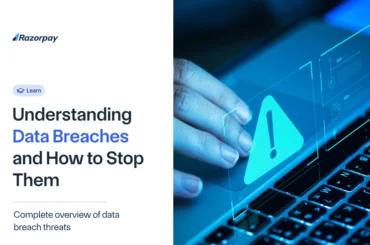Managing one-time or irregular transactions requires flexibility and quick solutions, making ad hoc payments essential. These payments address unique financial needs outside regular payment cycles. This guide explores ad hoc payment’s meaning, examples, processing methods, challenges, and benefits, helping you understand how it can streamline your business operations.
Table of Contents
What is an Ad Hoc Payment?
An Ad hoc payment refers to a one-time or irregular transaction made for a specific purpose rather than as part of a regular invoicing or payment process. These payments are typically initiated on an as-needed basis, allowing businesses and individuals to address unique financial requirements or exceptions to their standard payment practices.
Ad hoc payments are distinguished from recurring payments involving regular, scheduled transactions at fixed intervals. While recurring payments are commonly used for bills, subscriptions, or memberships, ad hoc payments are more suitable for occasional or unplanned transactions. For example, a freelancer may receive an ad hoc payment for a specific project, separate from their regular invoicing process.
In invoicing, ad hoc payments play a crucial role in addressing exceptional circumstances or one-off transactions. They provide a means to handle payments that fall outside of the standard invoicing cycle, ensuring that businesses can efficiently manage their financial obligations and maintain healthy cash flow.
Examples of Ad Hoc Payment
Ad hoc payments find applications across various scenarios, both in business and personal contexts. Here are some common examples of ad hoc payments:
1. Employee-related payments:
- Bonuses or incentives for exceptional performance
- Overtime pay for additional hours worked
- Night shift differentials
- Petrol allowances for work-related travel
- Diwali bonuses or other holiday-related payments
- Service charges or tips
- Gift vouchers as rewards or recognition
2. Freelancing and contract work:
- Payments for specific projects or tasks completed
- Consultation fees for expert advice or services rendered
- Compensation for additional work beyond the original scope
3. Business transactions:
- Payments for one-time services or goods provided by suppliers
- Compensation for meeting specific performance targets
- Addressing unforeseen expenses or changes in project requirements
4. Personal and miscellaneous payments:
- Emergency expenses or unexpected bills
- Donations to charitable organisations
- Event tickets or registration fees
These examples highlight the diverse range of situations where ad hoc payments come into play. By enabling businesses and individuals to handle these specific transactions separately from their regular payment processes, ad hoc payments offer the necessary flexibility and adaptability to meet unique financial needs.
Types of Transactions under Ad Hoc Payments
Ad Hoc Payment – Internal Fund Transfer
Internal fund transfers involve the movement of funds between accounts within the same bank or financial institution. When initiating an ad hoc payment for an internal transfer, the payer must provide basic information about the payee, including their name and account details. The transfer process is relatively straightforward, not involving external financial networks or intermediaries.
To initiate an internal ad hoc payment, the payer typically logs into their online banking portal or mobile banking app, navigates to the fund transfer section, and selects the option for an internal transfer. They then enter the payee’s account number and confirm the transaction details before submitting the payment request.
Ad Hoc Payment – Domestic Fund Transfer
Domestic fund transfers involve sending money to accounts held at different banks or financial institutions within the same country. When initiating a domestic ad hoc payment, the payer must provide comprehensive information about the payee, including their name, account number, and the IFSC (Indian Financial System Code) of the destination bank.
To facilitate domestic ad hoc payments, banks often provide multiple payment methods or channels, such as NEFT (National Electronic Funds Transfer), RTGS (Real-Time Gross Settlement), or IMPS (Immediate Payment Service). The payer can choose the network that best suits their requirements in terms of transfer speed, transaction limits, and associated fees.
Initiating a domestic ad hoc payment involves logging into the online banking portal, selecting the appropriate fund transfer option, entering the payee’s details, choosing the preferred payment network, and confirming the transaction.
Ad Hoc Payment – International Fund Transfer
International fund transfers involve sending money across borders to accounts held in foreign countries. When initiating an international ad hoc payment, the payer must provide detailed information about the payee, including their name, bank account number, and the relevant clearing code or SWIFT payment (Society for Worldwide Interbank Financial Telecommunication) code of the destination bank.
Similar to domestic transfers, banks may offer multiple network options for international ad hoc payments, such as SWIFT or other cross-border payment systems. The payer can select the network based on factors such as transfer speed, fees, and the specific requirements of the destination country.
Initiating an international ad hoc payment involves providing the necessary payee details, selecting the appropriate payment network, specifying the transfer amount and currency, and confirming the transaction. However, international ad hoc payments may be subject to additional regulations, such as foreign exchange controls or anti-money laundering measures, which may require additional documentation or verification steps.
Processing Method of Ad Hoc Payments
Processing ad hoc payments is crucial for businesses to ensure smooth financial operations. Various payment processing methods, including traditional options like credit cards and direct debit payments, are available. However, these methods often come with high transaction fees and longer settlement times.
Open banking has emerged as a game-changer in the realm of ad hoc payment processing. Open banking enables efficient and cost-effective solutions for processing ad hoc payments by allowing banks to share data with third parties securely. Here’s a step-by-step overview of the ad hoc payment processing method:
- The payer initiates the ad hoc payment request, providing the necessary details such as payee information, amount, and purpose.
- The request is routed through the chosen payment network (e.g., internal transfer, domestic transfer, international transfer).
- The payment gateway securely processes the transaction, verifying the payer’s account and the payee’s details.
- Upon successful verification, the funds are transferred from the payer’s account to the payee’s account.
- The transaction is recorded, and both parties receive confirmation of the successful payment.
Challenges of Ad Hoc Payments
-
Cost Implications:
- Transaction Fees: Ad hoc payments, especially those made using credit or debit cards, often incur transaction fees. These fees are typically a percentage of the total transaction amount, which can add up quickly for businesses processing a high volume of ad hoc payments.
- Currency Conversion Fees: International ad hoc payments may be subject to currency conversion fees, as the funds need to be converted from one currency to another. These fees can be substantial and can impact the overall cost of the transaction.
-
Timing and Settlement:
- Delayed Fund Settlement: While the introduction of faster payment schemes like the Faster Payments Service in the UK has improved the speed of ad hoc payment processing, there can still be delays in the actual settlement of funds. This can impact cash flow and create challenges for businesses relying on timely receipt of payments.
- Payment Delays: Even with faster payment methods, delays can occur if customers do not initiate the ad hoc payment promptly. Late payments can disrupt cash flow and require additional follow-up and reconciliation efforts from businesses.
-
Reconciliation and Tracking:
- Manual Reconciliation: Ad hoc payments, being irregular and outside the standard invoicing process, may require manual reconciliation. This can be time-consuming and prone to errors, especially for businesses dealing with a large number of ad hoc transactions.
- Tracking Difficulties: Keeping track of ad hoc payments and ensuring they are properly recorded and accounted for can be challenging. With a centralised system or automated tracking mechanisms, businesses may be able to maintain accurate financial records.
-
Security and Fraud Prevention:
- Fraudulent Transactions: Ad hoc payments, like any other financial transaction, are susceptible to fraudulent activities. Businesses need to implement robust security measures and fraud detection mechanisms to mitigate the risk of unauthorised or fraudulent ad hoc payments.
- Data Privacy: Ensuring the security and privacy of sensitive financial information exchanged during ad hoc payment transactions is crucial. Businesses must adhere to data protection regulations and implement secure payment processing protocols to safeguard customer data.
Advantages of Ad Hoc Payments
Despite the challenges, ad hoc payments offer several notable advantages that make them a valuable tool for businesses and individuals. These benefits contribute to improved financial management, enhanced customer experience, and increased operational efficiency. Let’s explore the key advantages of ad hoc payments:
- Improved cash flow: Ad hoc payments allow businesses to receive funds quickly without waiting for lengthy invoicing cycles. This can help improve cash flow and maintain financial stability.
- Faster payment processing: With the advent of open banking and faster payment schemes, ad hoc payments can be processed more efficiently, reducing settlement times and improving the overall payment experience.
- Suitability for creative work: Ad hoc payments are particularly well-suited for industries that involve creative work or one-time projects, such as freelancing or consulting. They provide a convenient way to settle payments for specific tasks or deliverables.
- Handling odd payment requests: Ad hoc payments offer a flexible solution for handling exceptional or irregular payment requests that fall outside the scope of regular invoicing processes.
- Seamless payment experience for customers: By offering ad hoc payment options, businesses can enhance customer satisfaction and loyalty by providing a seamless and convenient payment experience.
Frequently Asked Questions
1. What is ad hoc in banking?
In banking, ad hoc refers to one-time or irregular transactions that are made outside the regular payment cycles or invoicing processes. Ad hoc payments are typically initiated for specific purposes or under special circumstances and are not part of scheduled or recurring payment arrangements.
2. What is the role of open banking in ad hoc payments?
Open banking plays a crucial role in facilitating efficient and cost-effective ad hoc payment processing. By allowing banks to share data with third parties securely, open banking enables the development of innovative payment solutions that streamline ad hoc transactions. Open banking APIs (Application Programming Interfaces) allow businesses to integrate ad hoc payment functionality into their systems, improving the speed, security, and convenience of these transactions.
3. Are ad hoc payments secure for both businesses and customers?
Ad hoc payments can be secure for both businesses and customers when processed through trusted payment gateways and adhering to industry-standard security protocols. Open banking regulations ensure that data sharing is done securely and with customer consent. Additionally, businesses should implement robust security measures, such as encryption and fraud detection mechanisms, to safeguard sensitive financial information during ad hoc payment processing.
4. How can I track and document ad hoc payments for record-keeping purposes?
To effectively track and document ad hoc payments, businesses should maintain comprehensive records of all transactions. This can be done by:
- Using accounting software or payment tracking tools to record ad hoc payments
- Assigning unique reference numbers to each ad hoc transaction
- Keeping digital copies of invoices, receipts, and payment confirmations
- Regularly reconciling ad hoc payments with bank statements
- Storing payment records securely and in compliance with data protection regulations




